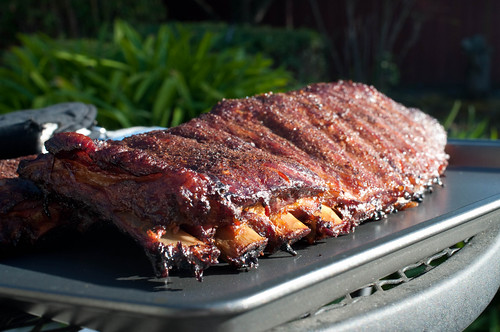
“The Ryan Express” Delivers the Goods
Major League Baseball Hall of Famer Nolan Ryan pitched 27 years in the big leagues, tossing a league record seven no-hitters.
In that span Ryan was comfortably pumping 100 mile-per-hour fastballs past hitters until he was 40 years old, registering 95 mph on the radar gun until retirement. Nicknamed “The Ryan Express” for his baseball exploits, he went on to become a successful business owner.
Ryan knows a good deal when he sees one. In 2010 he became a principal owner, president and CEO of the Texas Rangers baseball club. The team has made it to the World Series the last two seasons: losing to the San Francisco Giants in 2010 and participating in the thrilling, nail-biting autumn classic of 2011 against the St. Louis Cardinals.
Ryan also knows the value of the USDA shield. He’s the head of the Nolan Ryan Guaranteed Tender Beef Program, a marketing program verified by USDA’s Agricultural Marketing Service (AMS).
AMS relies on university-researched and industry-recognized standards to determine which marketing claims it chooses to verify.
Companies like Ryan’s can approach AMS and request the agency verify marketing claims such as “guaranteed tender” to assure customers that the products listed on packaging are exactly what they claim. This is an important service to consumers who desire a certain quality of beef and want third-party assurance that their beef purchases meet exacting requirements.
_________________________________________________________________________________________
USDA Certified – St. Louis (Cardinals) Style
If you bellied-up at a local sports bar and ordered a plate of St. Louis Style ribs while watching the 2011 World Series, thank a former USDA employee for naming the cut of pork.
In the late 1980s Steve Olson, an agricultural marketing specialist in the USDA Livestock and Seed Program’s Standardization Division, wrote meat standards for the Agricultural Marketing Service’s Institutional Meat Purchase Specifications (IMPS).
Last June Olson shared his story about naming the cut of meat with the St. Louis Post-Dispatch. He explained how some butchers fancied carving off the breast bone and brisket bones from pork spareribs. “We did a survey to find out if there was a consensus for what this was called,” Olson told the Post-Dispatch.
A majority of the respondents called it a St. Louis cut.
“The only reason I went ahead and put the term into the IMPS is because I happen to be an avid St. Louis Cardinals baseball team fan, and they had just defeated the San Francisco Giants in a playoff,” Olson said.
For more specifications, you can view the latest IMPS report. On pages 11 and 32, Item No. 416A is listed as “Pork Spareribs, St. Louis Style.”


